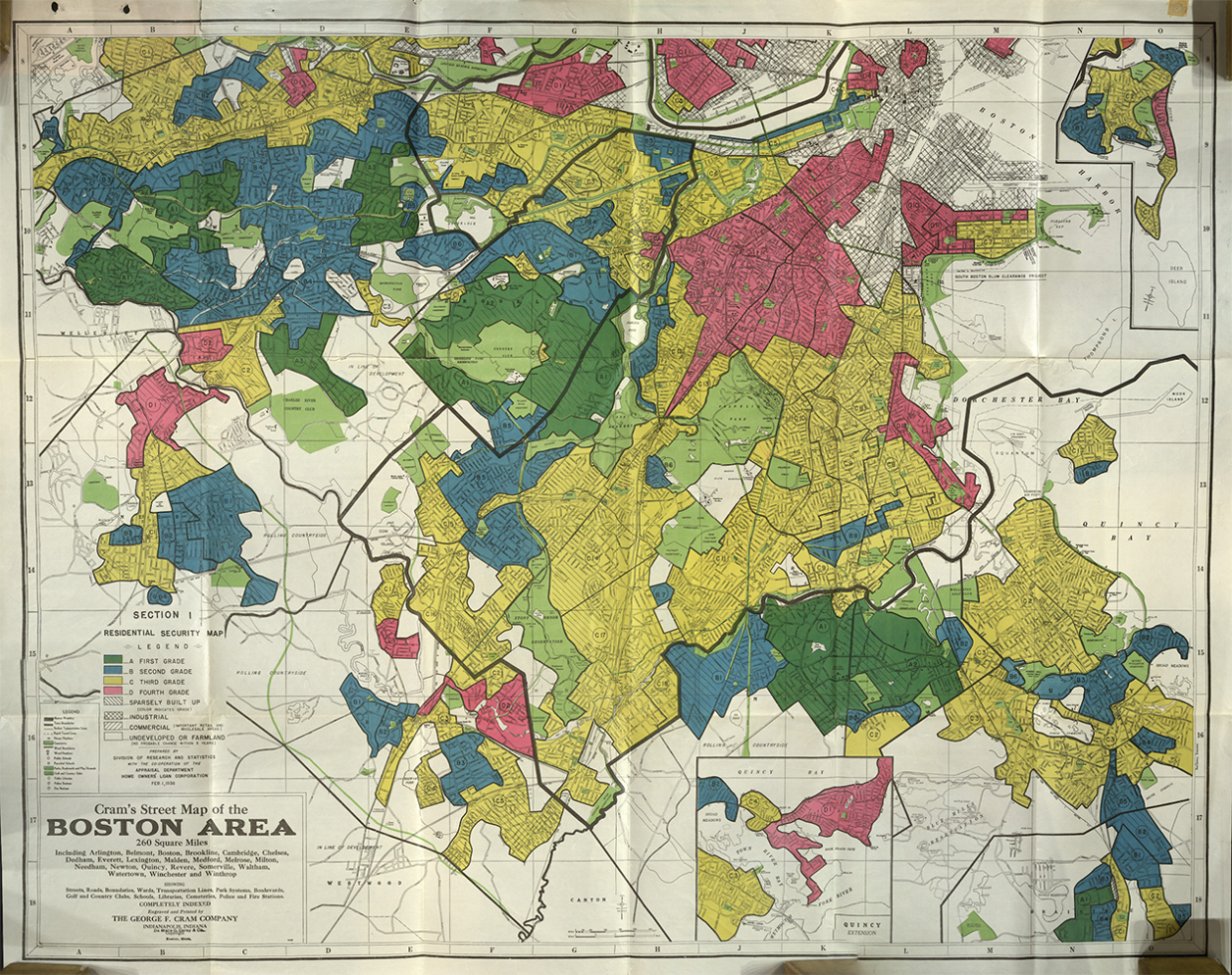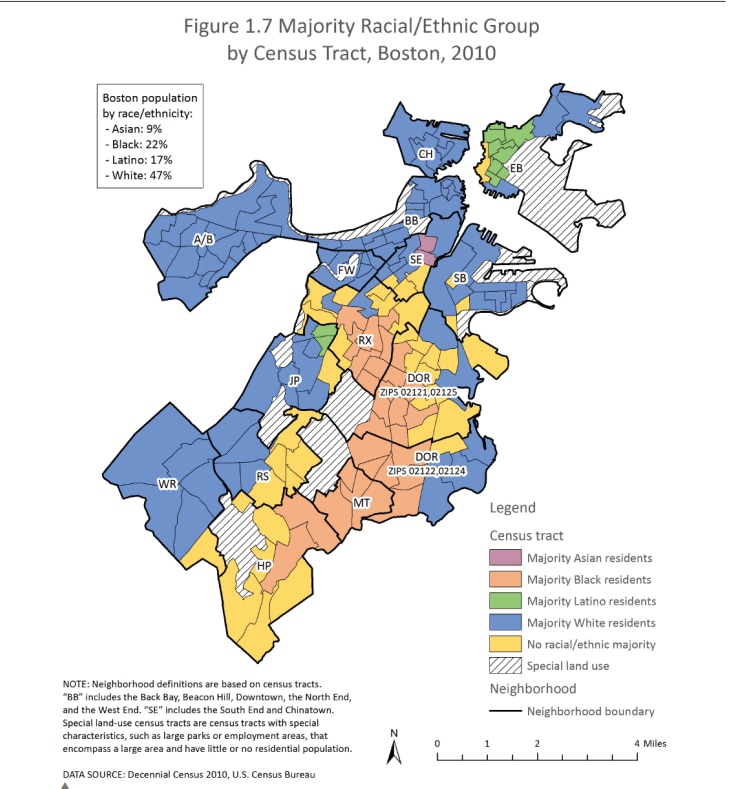About this Data Story
Towns where more than 50% of the population are people of color tend to be in the Greater Boston area and in cities like Springfield and Brockton. Throughout history, governments and industries have disinvested in some neighborhoods, especially those with communities of color, through racist practices like redlining and land use planning and zoning policies.1, 2 Manufacturing and disposal facilities have also disproportionately been placed in communities of color.3 Additionally, public housing has historically been in low-income areas with a majority Black population.4 These public housing sites tended to be in areas of increased exposure to toxins. In the 1950’s, homeownership loans in the suburbs were offered to low-income White residents while low-income Black residents were targeted for public housing in urban areas.5
Redlining Maps of Boston |
Boston Race Density |
|
|
For more information, explore the ArcGIS US Race and Ethnicity Dot Density map. |
Massachusetts Towns by Percent of Residents of Color
Zoom is available when viewing map. Hover over each city/town to see percentages.
2020 population estimates from University of Massachusetts Donahue Institute. n indicates count of cities/towns.
Additional Information and Footnotes
Hispanic is used to reflect current data collection practices. We acknowledge this may not be the preferred term. Throughout this report, NH refers to Non-Hispanic. People of color refers to individuals identifying as Black, American Indian/Alaska Native, Asian, Hispanic, Native Hawaiian, Pacific Islander, and Other. Unless otherwise noted, adults are ages 18+. Data are most recently available for the specified data source.
1 Mitchell, B. (2018). HOLC “Redlining” Maps: The Persistent Structure of Segregation and Economic Inequality. National Community Reinvestment Coalition. Retrieved from https://ncrc.org/holc/
2 Centers for Disease Control and Prevention. (2006). Land Use Planning for Public Health: The Role of Local Boards of Health in Community Design and Development. Retrieved from https://www.cdc.gov/healthyplaces/publications/landusenalboh.pdf
3 Erickson, J. (2016). Targeting minority, low-income neighborhoods for hazardous waste sites. University of Michigan News. University of Michigan. Retrieved from https://news.umich.edu/targeting-minority-low-income-neighborhoods-for-hazardous-waste-sites/
4 U.S. Department of Housing and Urban Development. (1995). U.S. Housing Market Conditions Summary. Retrieved from https://www.huduser.gov/periodicals/ushmc/spring95/spring95.html
5 Gross, T. (2017). A 'Forgotten History' Of How the U.S. Government Segregated America. National Public Radio; Fresh Air. Retrieved from http://www.npr.org/2017/05/03/526655831/a-forgotten-history-of-how-the-u-s-government-segregated-america
6 Hobson-Prater, T. & Leech, T. (2012). The Significance of Race for Neighborhood Social Cohesion: Perceived Difficulty of Collective Action in Majority Black Neighborhoods. Journal of Sociology and Social Welfare, XXXIX(1): 89-109. Retrieved from https://pdfs.semanticscholar.org/1877/81f3d59eba3ec0784bae3c5295b35cf9c685.pdf
Additional Resources
- Technical notes for this data story
-
Open CSV file, 6.87 KB, Data Download: Segregation Data Story (English, CSV 6.87 KB)

